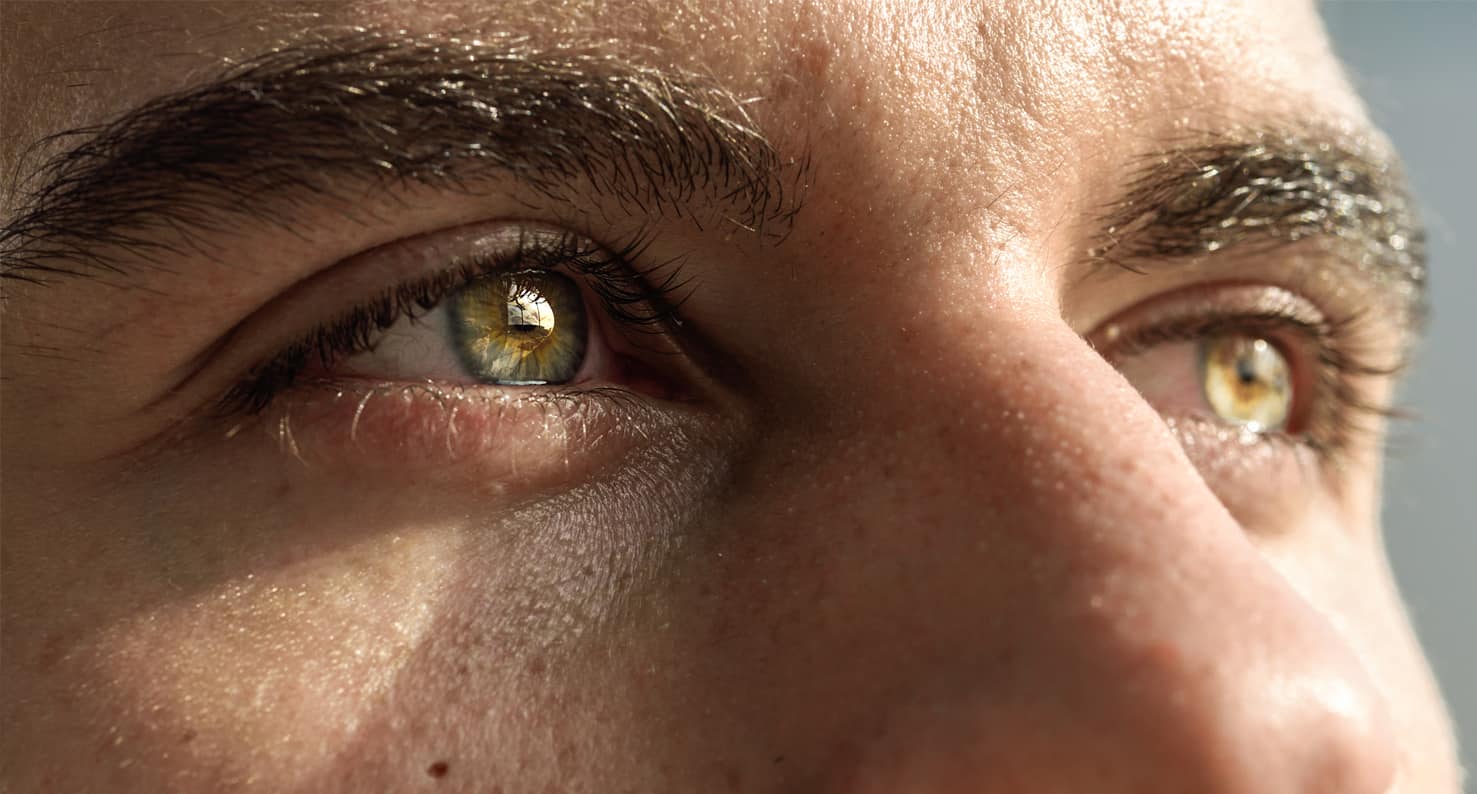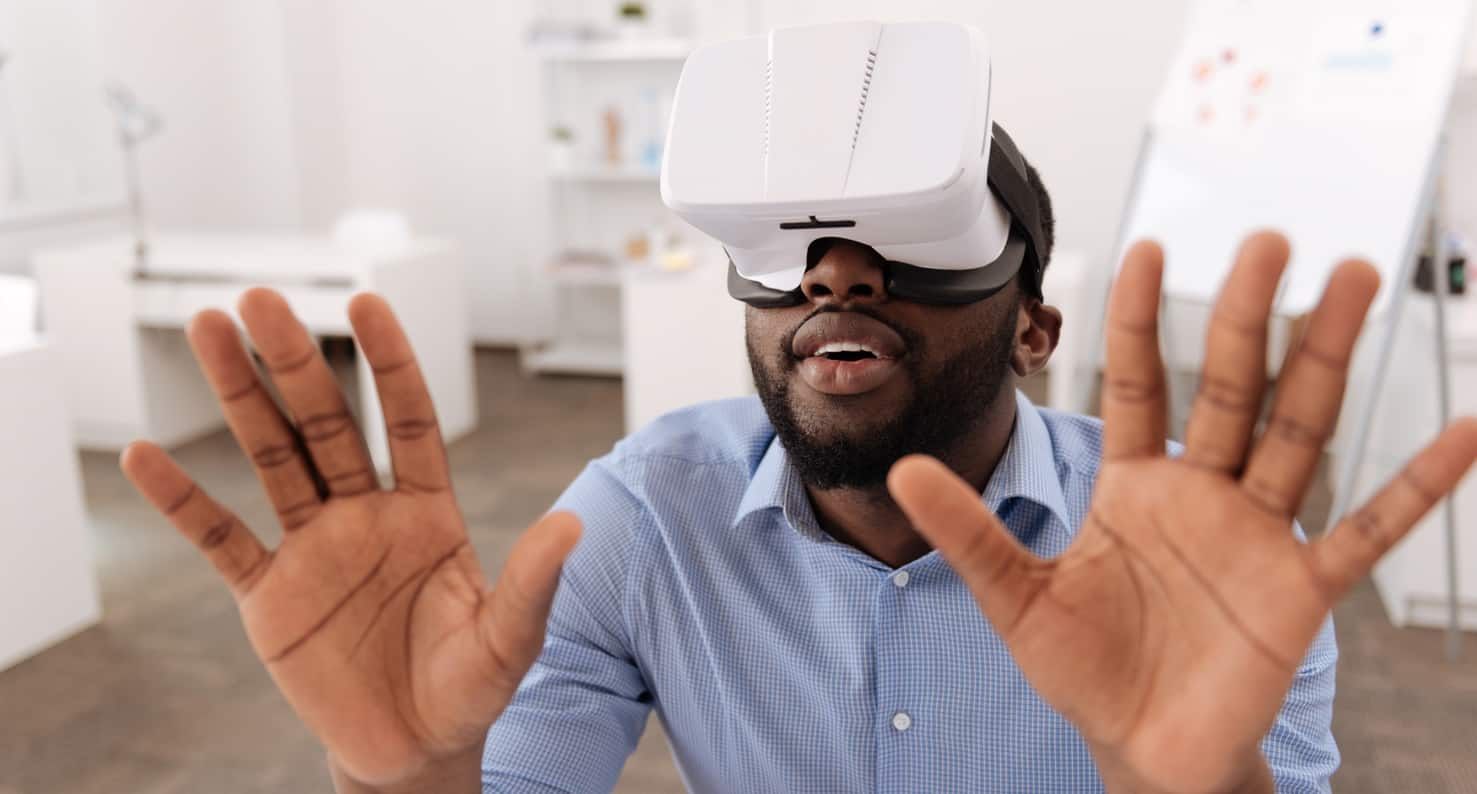Are Virtual Reality Headsets Bad For Your Eyes?
Published by on October 18, 2017
Virtual reality (VR) technology can transport us into outer space, onto sci-fi battlefields, among coral reefs underwater, and just about anywhere else a person might want to go. With so many games, apps, and headsets offering this 3D experience for users, many people are embracing VR technology. But troubling questions are surfacing: Are VR headsets bad for your eyes? What effect could it have on your vision? Is VR technology safe? It is known that virtual reality headsets can cause short-term eye strain. While the technology is relatively new and no long-term studies have been done, there are a few things we do know that can help answer these eye safety questions.
How VR Headset Immersion Work
VR technology allows the user to experience a life-sized, 3D virtual environment without any screen boundaries. VR headsets mirror how your eyes naturally work. They show each eye a slightly different image, so you are able to perceive depth. So, how do these headsets put you into a simulated environment?
VR headsets:
- use either two feeds sent to one display or two LCD displays, one for each eye.
- have lenses placed between your eyes and the pixels, which focus and reshape the picture for each eye, creating a stereoscopic 3D image.
- provide an increased vision field of view, which is the width of the picture.
- make use of head tracking, shifting the picture in front of you as you look up, down, side to side.
Why Is There an Age Limit?
The majority of VR headset manufacturers say the device is not suitable for children under age 12 or 13. According to the American Academy of Ophthalmology, there is no reason to be concerned that VR headsets will damage eye development, health, or function. The age limit for VR technology might make sense for content, but as far as we know, VR technology poses no threat to the eyes.
Eye Strain, and Other Common Side Effects When Using VR Technology
While there may not be any risk to your eye health, VR users have reported some side effects while using the technology.
Dizziness and Motion Sickness – This can occur when you view images in motion. These graphics give the brain the same visual signals it receives during real physical motion, which can make you dizzy. If you experience motion sickness on roller coasters, you may also be prone to virtual motion sickness.
Not Experiencing 3D Immersion – Some people may not be able to fully see the 3D effects of VR headsets if they have certain eye conditions, like amblyopia (when the vision in one of the eyes is reduced because the eye and brain don’t work together properly), strabismus (when the eyes do not properly align with each other when looking at an object) or other eye issues that inhibit focusing. This doesn’t mean that vision disorders are caused by VR technology. But people with vision disorders may be more likely to experience headaches, eye strain, and fatigue when using VR.
Eye Strain and Fatigue – Staring at a VR headset screen, or any digital device, for a prolonged period of time may cause eye strain or fatigue. You may experience these common symptoms because you tend to blink less while staring at a screen, which causes the front surface of the eye to dry out and feel fatigued. Eye strain is generally uncomfortable and can be experienced as dry or scratchy, tired eyes. To help avoid this, remember the 20-20-20 rule: Every 20 minutes, take a quick 20-second break and look at something 20 feet away.

Take Action
An estimated 26 percent of all VR gamers are under 18. Eye focus, tracking, and depth perception is still developing into middle childhood. While there are no long-term studies of VR on eye health, it is important to pay close attention to you and your children’s eye health for potential myopia (nearsightedness) and digital eye strain.
The easiest way to monitor your family’s eye health is to have annual eye exams. For other questions or concerns you may have, or to schedule a Kugler Vision EyeAnalysis eye exam, contact us today at 402.558.2211.

Lance Kugler, MD, is a specialist in LASIK and vision correction surgery and CEO of Kugler Vision. A proud Omaha native, he is passionate about improving lives through clear vision. Dr. Kugler serves on several national boards, and his practice is recognized internationally as a center of excellence. Dr. Kugler is one of the original founders of the Refractive Surgery Alliance, an international organization comprised of over 350 of the world’s leading vision correction surgeons; he also served as its first president. In 2019, Dr. Kugler was selected as a TEDx speaker, and delivered a talk in Omaha about the worldwide epidemic of nearsightedness and refractive solutions. Dr. Kugler is an Associate Professor of Refractive Surgery at the University of Nebraska Medical Center’s Truhlsen Eye Institute, has been published in many medical journals, and participates in numerous clinical studies to advance the field of vision correction surgery. Additionally, Dr. Kugler is proud to be a Board Certified Fellow of the World College of Refractive Surgery & Visual Sciences. Dr. Kugler and his wife are proud parents to five active kids. When he has a spare moment, he enjoys skiing, tennis, travel, and fine coffee.





Leave a Reply